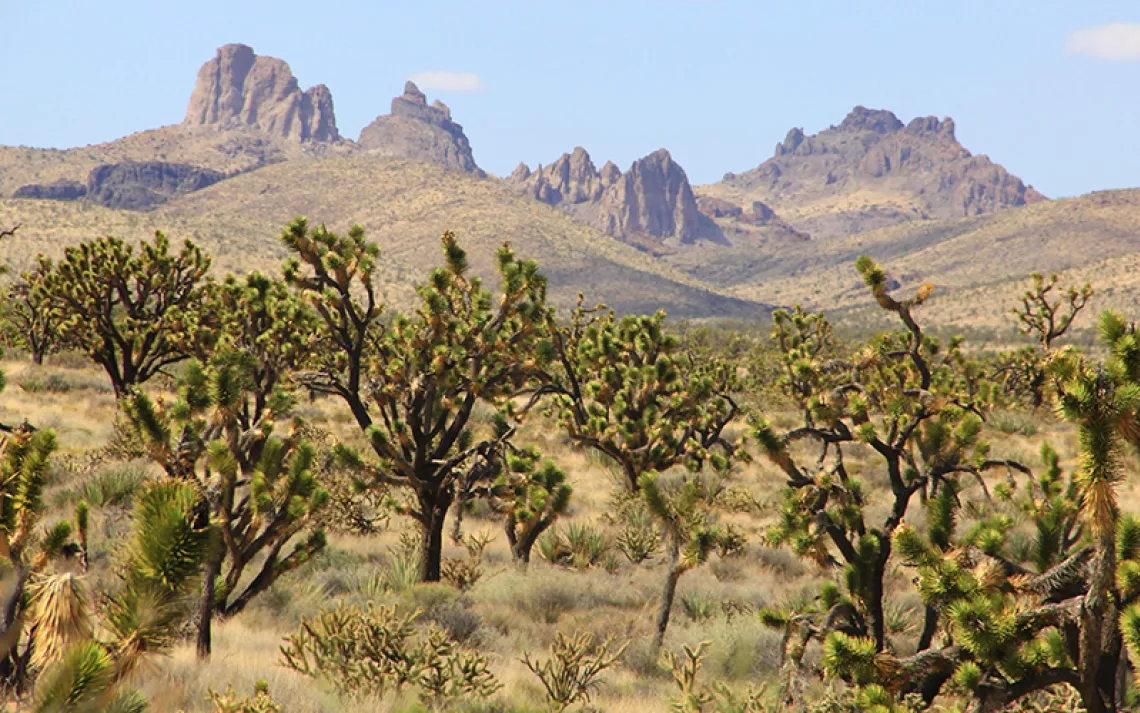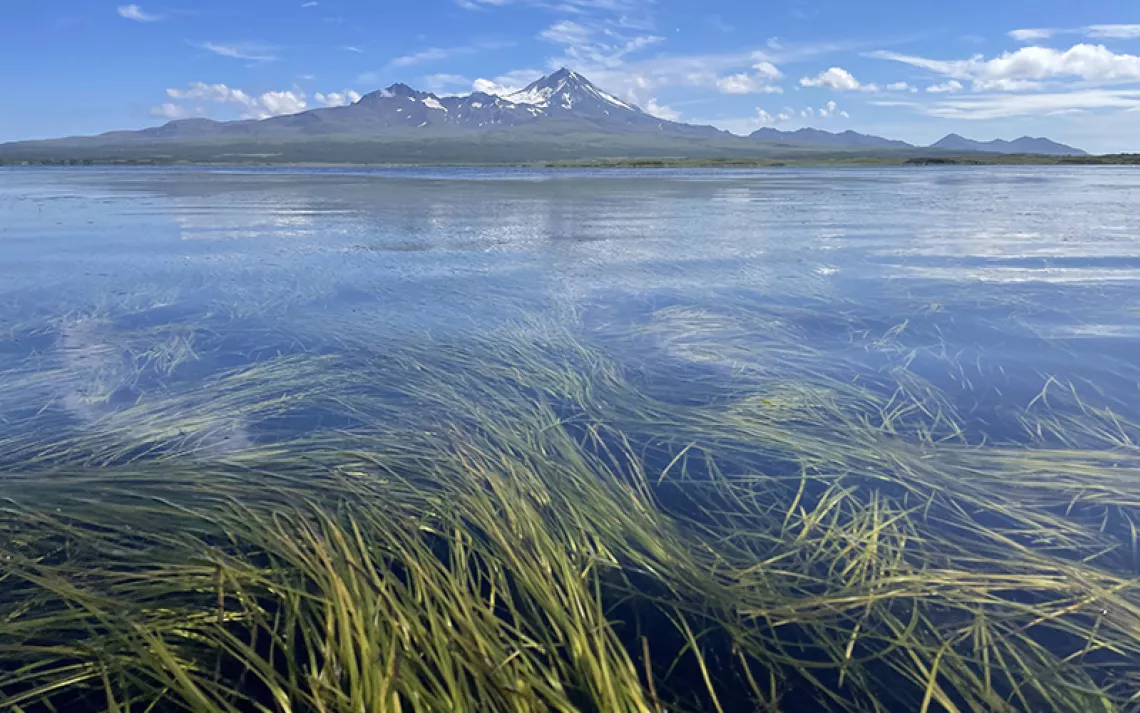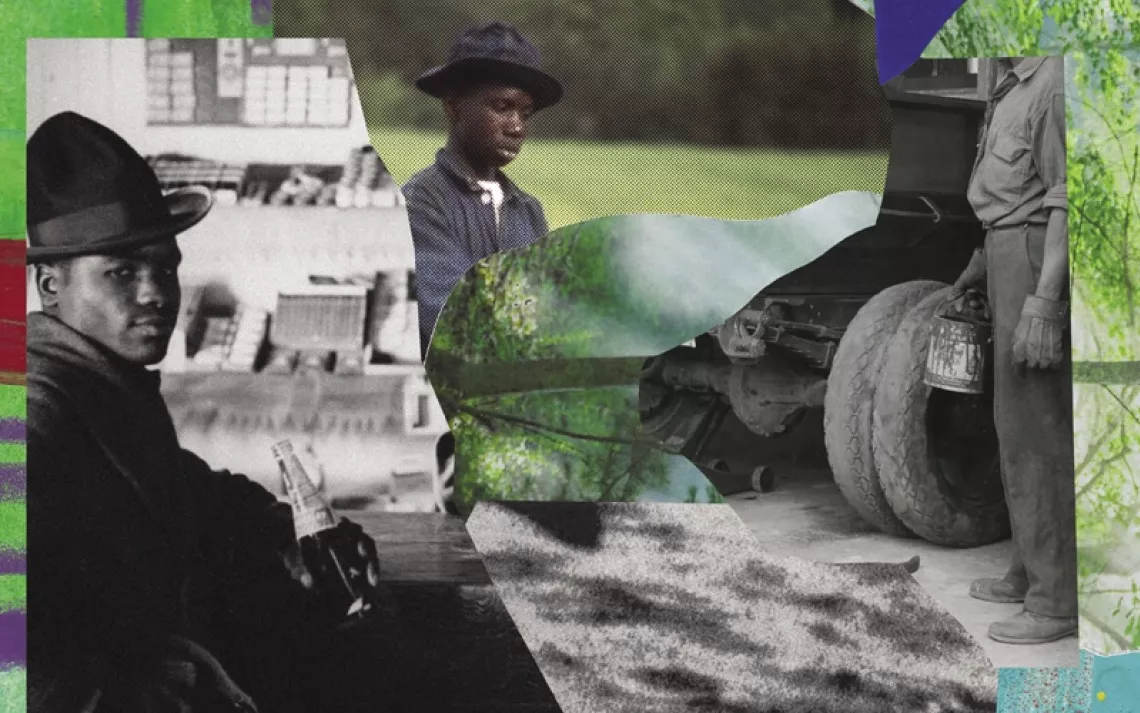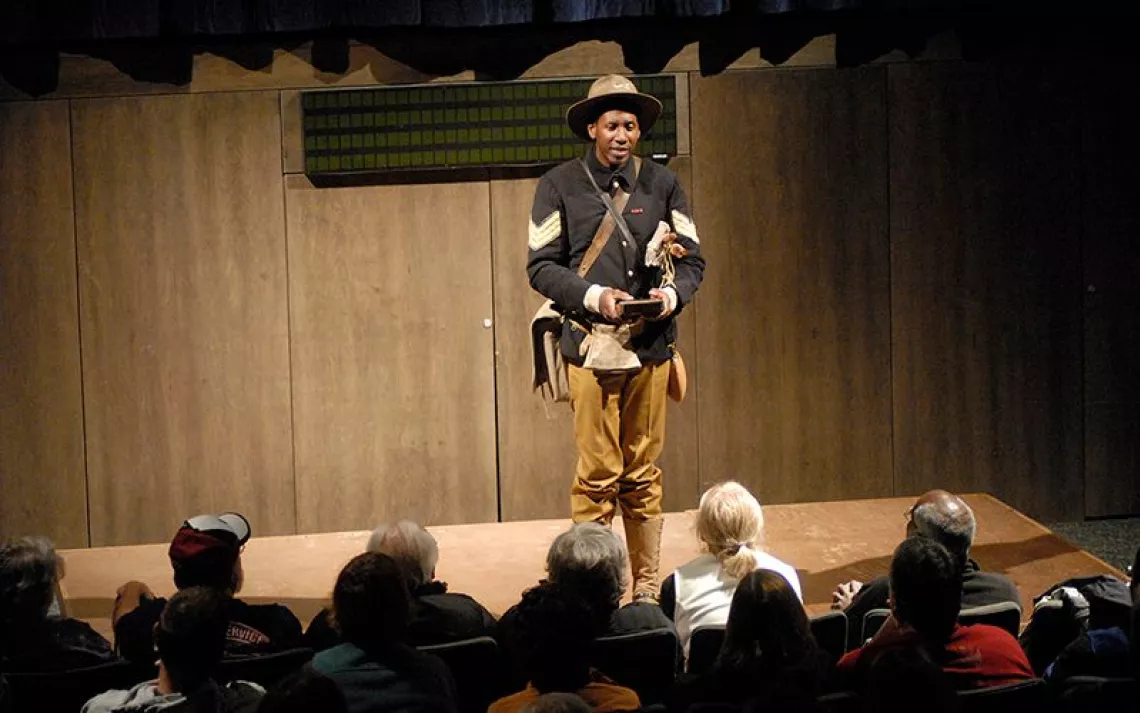As the National Park Service Celebrates Its Centennial, the Parks Are Essential to Creating a Culture of Reverence
An excerpt from Terry Tempest Williams's new book, The Hour of Land
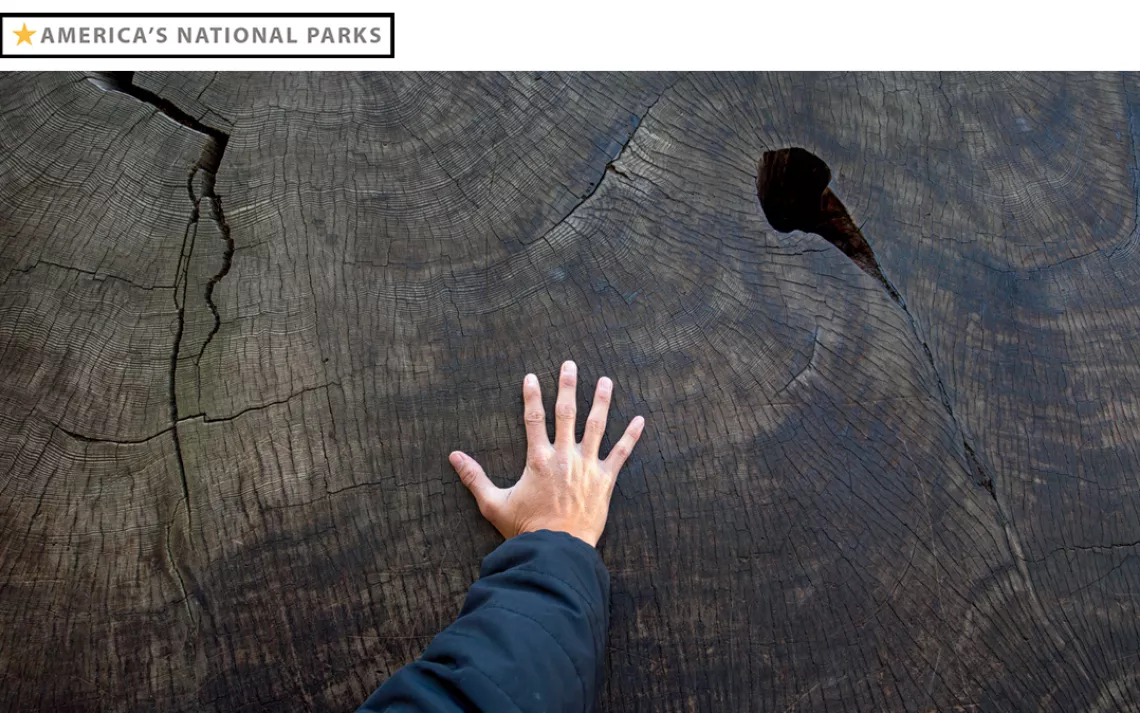
An enormous tree cross-section at Sequoia National Park. Top: Yosemite National Park from the Tunnel View Overlook.
|Photographs by Ian Shive
America's national parks were a vision seen through the horrors of war.
On June 30, 1864, not long after the Civil War's most deadly battle, at Gettysburg, President Abraham Lincoln signed the Yosemite Land Grant into law, protecting for the first time—for all time—land secured for the future. Yosemite Valley and the ancient, giant sequoias of the Mariposa Grove located there were written into law as America's inaugural nature preserve, ceded to the state of California and later to be expanded and established as a national park in 1890. Though this war-weary president would never see the glory of El Capitan or the beauty of its reflection in the Merced River, he had experienced them through the images of photographers. These magnificent lands were alive in Lincoln's imagination, and he believed they might offer a unifying peace for a divided nation.
The irony was this: Fourteen years prior to the signing of the Yosemite Land Grant, another war had been fought there—the Mariposa Indian War, from 1850 to 1851.
It is a chapter buried in America's history. In the midst of the California Gold Rush, the Mariposa Battalion, a volunteer militia, had gone to battle against the Ahwahneechee Indians who lived in the Yosemite Valley. The Ahwahneechees resisted the invasion but were eventually defeated. In an act the military leadership deemed respectful, they named the lake where the war was fought after Chief Tenaya, leader of the Ahwahneechees; but to the chief, this well-intentioned gesture served as a final humiliation. In the name of Manifest Destiny, Tenaya and his people were removed from their home ground and assigned to a reservation near Fresno, California. The reservation was short-lived, as Congress did not ratify any of the 18 treaties made with California Indians between 1851 and 1852. As a result, Miwoks, Monos, and Yokuts remained in their traditional homelands with no claim to the land, always on guard against white settlers.
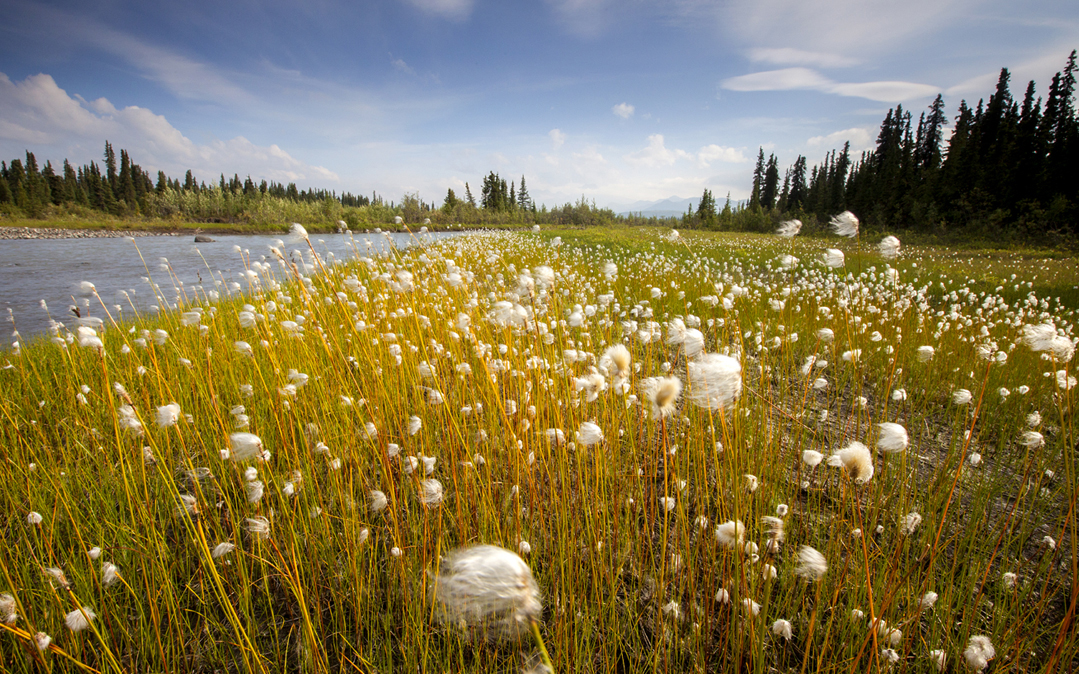
Wildflowers abound in Denali National Park, Alaska.
Within the borders of America's national parks there exist myriad stories of relationships, and as is always the case with relations, the bonds formed, severed, and renewed are complicated. They are also fundamental to who we are as a country. Whether historical or ecological, political or personal, the connective tissue that holds together or tears apart our public lands begins with "We the People."
Our national parks receive more than 300 million visitations a year. What are we searching for, and what do we find? As we Americans and visitors from abroad explore the 400-plus sites within the national park system—which includes national parks, monuments, battlefields, historic sites, seashores, and recreation areas located in all 50 states—perhaps it is not so much what we learn that matters in these moments of awe and wonder, but what we feel in relationship to a world beyond ourselves, even beyond our own species.
I was raised in Utah, home to five national parks and seven national monuments. Growing up, my siblings and I took them for granted: Zion, Bryce, Arches, Canyonlands, and Capitol Reef were in our backyard, the land where our families gathered and we roamed free.
Once, on an overnight trip in the Zion Narrows, my brother and I camped against a redrock wall. In the morning, we discovered that a boulder had fallen between us. We cross-country skied in Bryce Canyon, convinced the pink and yellow pinnacles of stone were lit from the inside out, especially at night. In Capitol Reef, we picked peaches from orchards planted by Mormon pioneers. We knew that Arches and Canyonlands were an acquired taste, a bare-boned landscape more akin to Mars than to Earth. Natural Bridges National Monument had the darkest, most star-struck skies. It was also the place where I almost died falling off a cliff, with 136 stitches running down my forehead like a red river and a lifelong scar to prove it. We learned early on that we live by wild mercy.
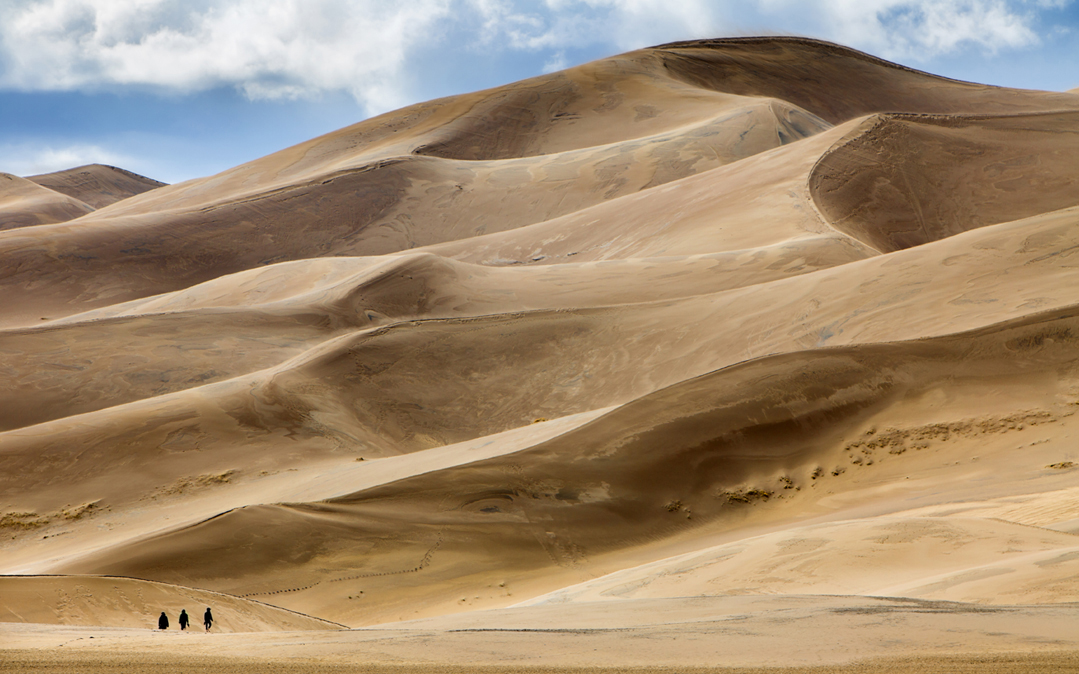
Great Sand Dunes National Park and Preserve in Colorado.
But it was standing inside Timpanogos Cave National Monument as an eight-year-old child that most marked me. We hiked up the steep mountain trail that rises a thousand feet from the valley floor in a short mile and a half. We were hiking with our church group from Salt Lake City, just an hour to the north. We reached the entrance of the cave and were ushered in by a park ranger. Immense stalactites and stalagmites hung down from the ceiling and rose up from the floor, declaring themselves teeth. We were inside the gaping mouth of an animal, and we were careful not to disturb the beast. We passed through Father Time's Jewel Box and the Valley of Sleep, traversing the cave on a narrowly constructed walkway above the floor so as not to disturb its fragility. But it was the Great Heart of Timpanogos Cave that captured my attention.
When everyone else left the charismatic form, I stayed. I needed more time to be closer to it, to watch its red-orange aura pulsating in the cavernous space of shadows. I wanted to touch the heart, run the palms of my hands on its side, believing that if I did, I could better understand my own heart, which was invisible to me. I was only inches away, wondering whether it would be cold or hot to the touch. It looked like ice, but it registered as fire.
Suddenly, I heard the heavy door slam. Darkness clamped down. The group had left without me. I was forgotten—alone—locked inside the cave. I waved my hand in front of my face. Nothing. I was held in a darkness so deep that my eyes seemed shut even though they were open. All I could hear was the sound of water dripping and the beating heart of the mountain.
I don't know how long I stood inside Timpanogos Cave before our church leader realized I was missing, but it was long enough to experience how fear moves out of panic toward wonder. Inside the cave, I knew I would be found. What I didn't know was what would find me—the spirit of Timpanogos.
To this day, my spiritual life is found inside the heart of the wild. I do not fear it. I court it. When I am away, I anticipate my return, needing to touch stone, rock, water, the trunks of trees, the sway of grasses, the barbs of a feather, the fur left behind by a shedding bison.
In 1955, Wallace Stegner curated a collection of essays and photographs called This Is Dinosaur. The book was an impassioned plea for why Dinosaur National Monument in Utah should not be the site of the Echo Park hydroelectric dam, which would flood the lands rich with archaeological history adjacent to the Green and Yampa Rivers.
In the first chapter, called "The Marks of Human Passage," Stegner wrote:
It is a better world with some buffalo left in it, a richer world with some gorgeous canyons unmarred by sign boards, hot-dog stands, super highways, or high-tension lines, undrowned by power or irrigation reservoirs. If we preserved as parks only those places that have no economic possibilities, we would have no parks. And in the decades to come, it will not be only the buffalo and the trumpeter swan who need sanctuaries. Our own species is going to need them, too. It needs them now.
The dam was never built. Six decades later, Dinosaur National Monument remains an oasis of calm, home of the Fremont people, who once inhabited those desert lands, and the Ute people, who still live in lands adjacent to the oil and gas boom currently under way in the Uintah Basin.
As we mark the centennial of the National Park Service, my question is this: What is the relevance of our national parks in the 21st century—and how might these public commons bring us back home to a united state of humility?
The creation of America's national parks has been the creation of myths. I grew up with the myth that when Yellowstone National Park was established in 1872, it was void of people. No one told me that our first national park was the seasonal and cyclic home of the Blackfeet, Bannock, Shoshone, and Crow Nations. I was told instead that the steaming basins with geysers and fumaroles, hot springs and boiling waters, were avoided by Indians. It was superstitious ground; Indians kept their distance. Like any good story with the muscle of privilege behind it, the story seemed believable. And I never asked the question "Who benefits from the telling of this particular story?"
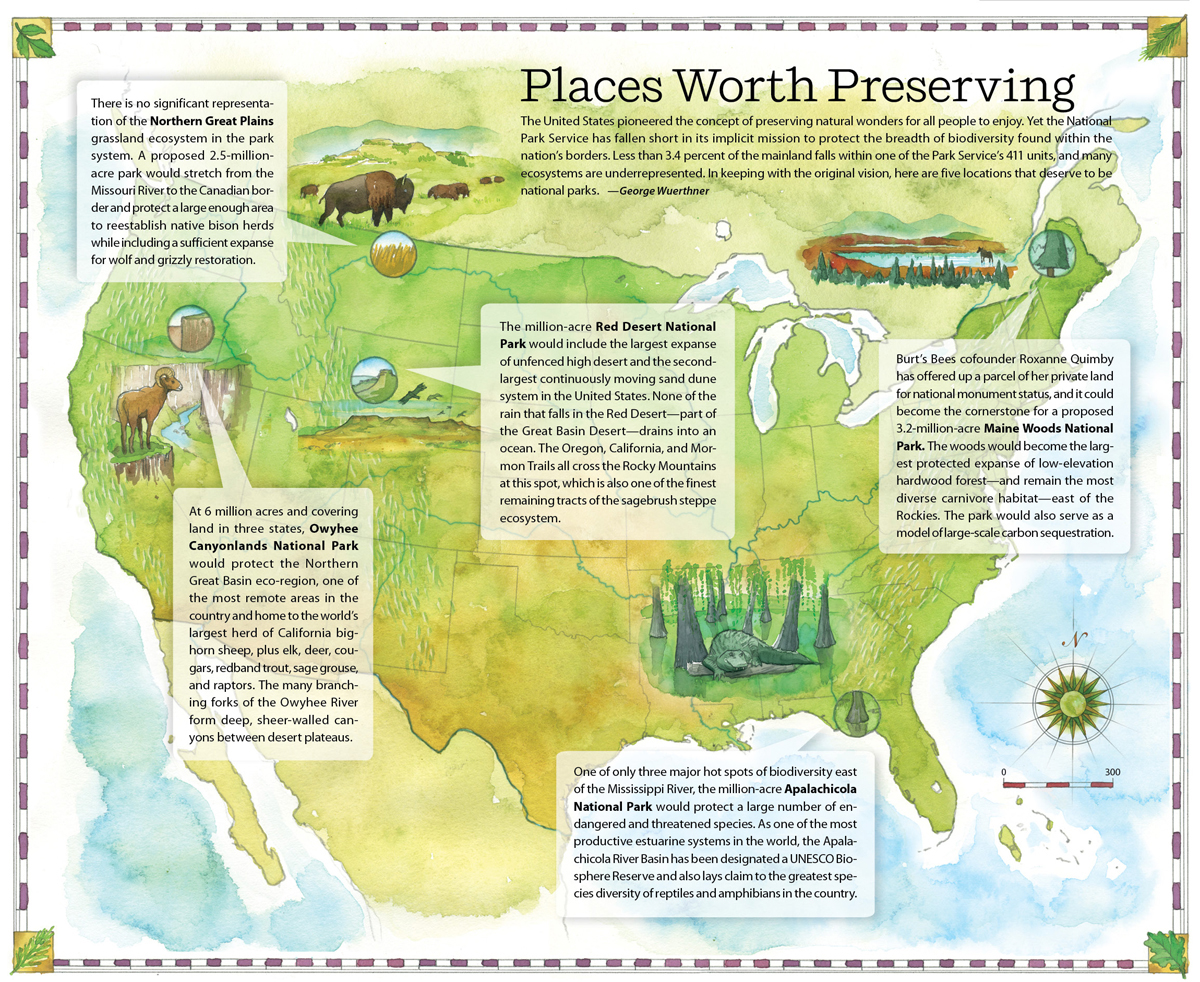
A national park wish list. | Illustration by Steve Stankiewicz. See map at full size.
The truth is, the federal government did not want visitors to Yellowstone to encounter Indians. Full stop. And so the government either banned tribes from the new preserve or relegated them to the margins, where they could continue to hunt game—unseen. Nor was it just Indians who complicated a mythical landscape. Elk and deer were lovely to look at, an enhancement of a pastoral vision. Wolves and grizzly bears were another matter—there was no place in this pretty picture for predators—and in Yellowstone they were hunted, trapped, and killed.
A fuller and more honest narrative has emerged over time, mostly from tribal historians who want to right a historical wrong. Knowledge matters. Justice matters. Hindsight shows us our blind spots and biases; we can recognize ourselves as human beings caught in the cultural mores of a specific time. This is not to excuse the brutal acts of the past, but to consider them in the light of what we know now.
Restoration is what is required today. Can we engage in the restoration of a different kind of storytelling, not the stuff of self-serving myths, but stories that foster integrity within a fragmented nation? Can we change America's narrative of independence to one of interdependence—an interdependence beautifully rendered in the natural histories found in our public lands? These are the parables of change and transition that might offer us maps to help us navigate our future in the era of a warming planet. We have never been here before.
In my wanderings among the national parks, I have been inspired by unexpected beauty and complexity. I have learned that there is no such thing as one portrait or one story, only the knowledge of our own experience shared. I no longer see America's national parks as "our best idea," but rather as our evolving idea. I see our national parks as our ongoing struggle as a diverse people to create circles of reverence in a time of collective cynicism in which we are wary of being moved by anything except our own clever perspective.
Oren Lyon, Faithkeeper of the Turtle Clan of the Seneca Nations of the Iroquois Confederacy, recently said, "It can no longer be about the color of our skin, but the color of our blood."
Our national parks are blood. They are more than scenery. They are portals and thresholds of wonder, an open door that swings back and forth from our past to our future. "This something we call America lives not so much in political institutions as in its rocks and skies and seas," wrote the photographer Paul Strand.
This is the Hour of Land, when our mistakes and shortcomings must be placed in the perspective of time. The Hour of Land is where we remember what we have forgotten: We are not the only species that lives and dreams on the planet. There is something enduring that circulates in the heart of nature that deserves our respect and attention.
Whenever I go to a national park, I meet the miraculous.
On June 2, 2015, my husband, Brooke, and I celebrated our 40th wedding anniversary. We chose to spend it in Yellowstone. We rose before dawn in the Lamar Valley not far from where wolves were reintroduced 20 years earlier. A silhouette of coyotes feasting on a bison carcass, surrounded by bald eagles and ravens, appeared in our binoculars. As the light grew stronger, the coyotes became nervous and left. The eagles flew. The ravens vanished. A large gray wolf entered.
Morning light illuminated the bison body, now more bones than flesh. We watched the wolf disappear into a red cavern of ribs. He emerged stained.
In the several hours we watched, the wolf's stomach expanded with each mouthful of bison ripped from the scaffolding of bones, until he stopped eating, looked over his shoulder, sniffed, and walked back into the woods.
At dusk, we returned to the Lamar Valley. We wondered whether the wolves might be back on the carcass. Instead, two coyotes were picking on bones. The coyotes disappeared into the shadows with the last light of day.
An indigo sky deepened. A mile away, a herd of a hundred or more bison grazed unconcerned. Seven left and walked single file toward the remains of the bison. They circled her twice, sniffed her, nudged her body, and tightened their circle as they lowered their heads. They stayed with her until twilight. Then the bison left as they came, walking single file back toward the herd—save one lone bull that stayed behind.
 The Magazine of The Sierra Club
The Magazine of The Sierra Club
